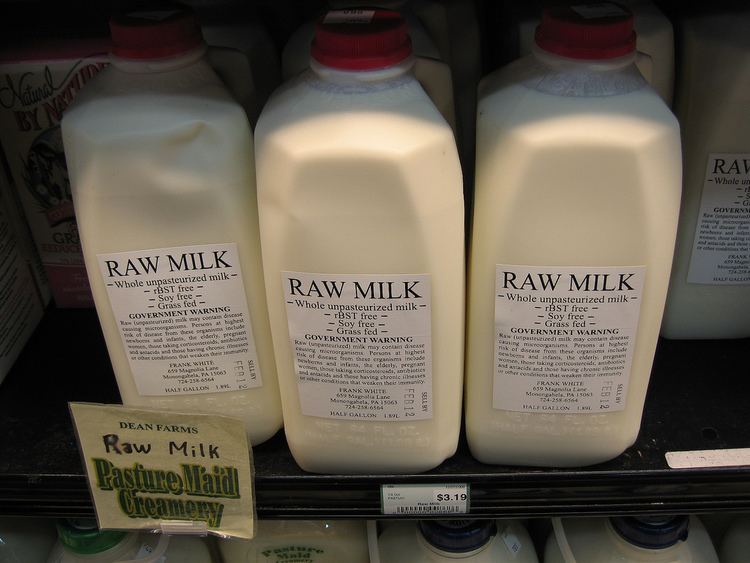 | ||
Similar Milk, Dairy product, Bánh, Yogurt, Skimmed milk | ||
One farmers perspective on the raw milk debate
Raw milk is milk that has not been pasteurized. While proponents have stated that there are benefits to its consumption, the medical community has warned of the dangers. Availability and regulation of raw milk vary from region to region.
Contents
- One farmers perspective on the raw milk debate
- Raw milk is it good or bad transformation tv episode 014
- History of raw milk and pasteurization
- Raw vs pasteurized debate
- Legal status
- Africa
- Asia
- Europe
- France
- Germany
- Scandinavia
- United Kingdom
- Canada
- United States
- Australia
- New Zealand
- Use
- References
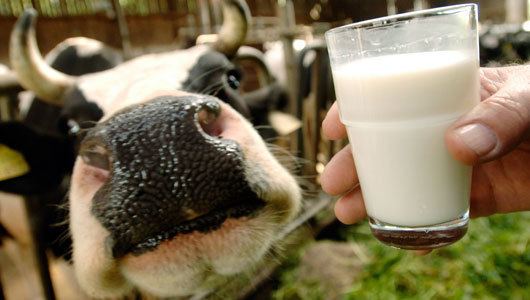
Raw milk is it good or bad transformation tv episode 014
History of raw milk and pasteurization
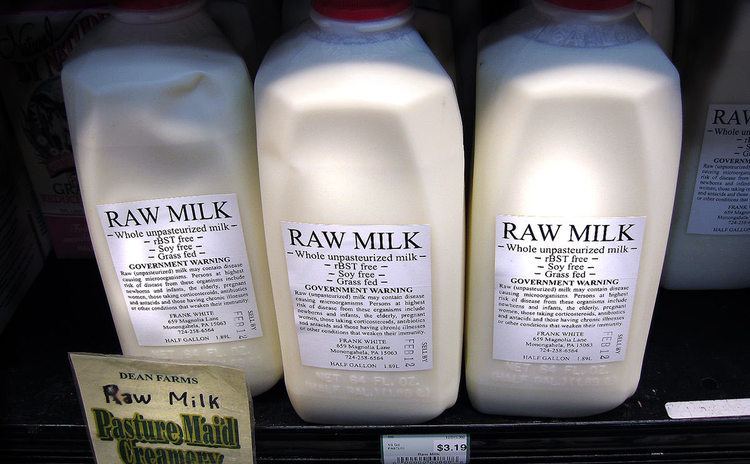
Cattle have been domesticated for some 10,500 years. Europeans first started consuming milk from cattle around 7,500 years ago.
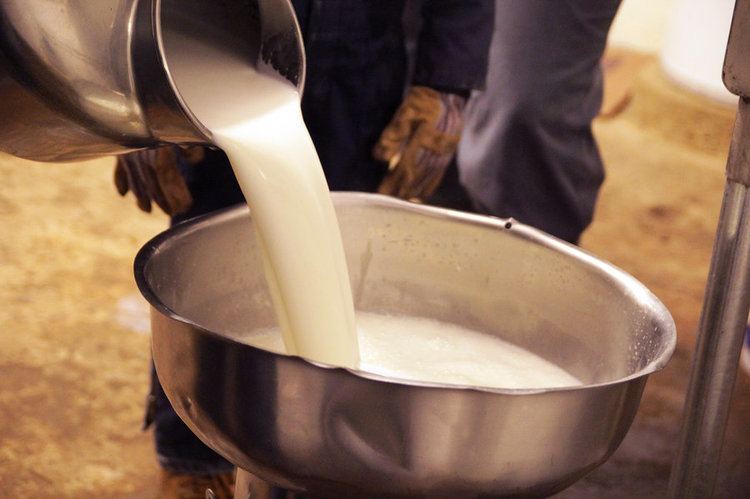
Pasteurization is widely used to prevent infected milk from entering the food supply. The pasteurization process was developed in 1864 by French scientist Louis Pasteur, who discovered that heating beer and wine was enough to kill most of the bacteria that caused spoilage, preventing these beverages from turning sour. The process achieves this by eliminating pathogenic microbes and lowering microbial numbers to prolong the quality of the beverage.

After sufficient scientific study led to the development of germ theory, pasteurization was introduced in the United States in the 1890s. This move successfully controlled the spread of highly contagious bacterial diseases including E. coli, bovine tuberculosis and brucellosis, (all thought to be easily transmitted to humans through the drinking of raw milk). In the early days after the scientific discovery of bacteria, there was no product testing to determine whether a farmer's milk was safe or infected, so all milk was treated as potentially contagious. After the first tests were developed, some farmers took steps to prevent their infected animals from being killed and removed from food production, sometimes even falsifying test results to make their animals appear free of infection. Recent advances in the analysis of milk-borne diseases have enabled scientists to track the DNA of the infectious bacteria to the cows on the farms that supplied the raw milk.
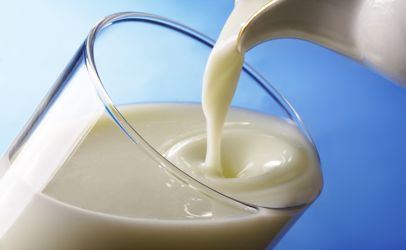
The recognition of many potentially deadly pathogens, such as E. coli 0157 H7, Campylobacter, Listeria, and Salmonella, and their presence in milk products has led to the continuation of pasteurization. The Department of Health and Human Services, Center for Disease Control and Prevention, and other health agencies of the United States strongly recommend that the public do not consume raw milk or raw milk products. Young children, the elderly, people with weakened immune systems, and pregnant women are particularly susceptible to infections originating in raw milk.
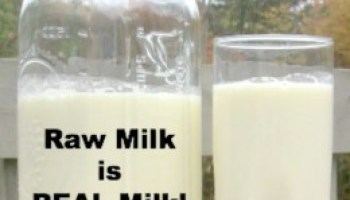
In the USA, re-pasteurization occurs when pasteurized milk from the US mainland is transported by sea to Hawaii, and then pasteurized again.
Raw vs. pasteurized debate
Those favoring the consumption of raw milk believe that raw milk and associated products are healthier and taste better. Those favoring the consumption of pasteurized milk consider the pathogen risk associated with drinking raw milk unacceptable.
Agencies such as the Centers for Disease Control and Prevention (CDC), and the Food and Drug Administration (FDA) in the United States, and other regulatory agencies around the world say that pathogens from raw milk, including potentially tuberculosis, diphtheria, typhoid, and streptococcal infections, make it unsafe to consume. Similarly, a recent review authored by the Belgian Federal Agency for the Safety of the Food Chain and experts from Belgian universities and institutions concluded that "raw milk poses a realistic health threat due to a possible contamination with human pathogens. It is therefore strongly recommended that milk should be heated before consumption. With the exception of an altered organoleptic [flavor] profile, heating (particularly ultra high temperature and similar treatments) will not substantially change the nutritional value of raw milk or other benefits associated with raw milk consumption."
Raw milk advocates, such as the Weston A. Price Foundation, say that raw milk can be produced hygienically, and that it has health benefits that are destroyed in the pasteurization process. Research shows only very slight differences in the nutritional values of pasteurized and unpasteurized milk.
Three studies have found a statistically significant inverse relationship between consumption of raw milk and asthma and allergies. However, all of these studies have been performed in children living on farms and living a farming lifestyle, rather than comparing urban children living typical urban lifestyles and with typical urban exposures on the basis of consumption or nonconsumption of raw milk. Aspects of the overall urban vs. farming environment lifestyle have been suggested as having a role in these differences, and for this reason, the overall phenomenon has been named the "farm effect." A recent scientific review concluded that “most studies alluding to a possible protective effect of raw milk consumption do not contain any objective confirmation of the raw milk's status or a direct comparison with heat-treated milk. Moreover, it seems that the observed increased resistance seems to be rather related to the exposure to a farm environment or to animals than to raw milk consumption.” For example, in the largest of these studies, exposure to cows and straw as well as raw milk were associated with lower rates of asthma, and exposure to animal feed storage rooms and manure with lower rates of atopic dermatitis; "the effect on hay fever and atopic sensitization could not be completely explained by the questionnaire items themselves or their diversity."
Legal status
Regulation of the commercial distribution of packaged raw milk varies across the world. Some countries have complete bans, but many had partial bans that do not restrict the purchase of raw milk bought directly from the farmer. Raw milk is sometimes distributed through a program, in which the consumer owns a share in the dairy animal or the herd, and therefore can be considered to be consuming milk from their own animal, which is legal. Raw milk is sometimes marketed for animal or pet consumption, or for other uses such as soap making in places where sales for human consumption are prohibited.
Africa
Although milk consumption in Africa is fairly low compared to the rest of the world, in tribes where milk consumption is popular, such as the Maasai tribe, milk is typically consumed unpasteurized.
Asia
In rural areas of Asia where milk consumption is popular, milk is typically unpasteurized. In large cities of Asia, raw milk, especially from water buffalo, is typical. In most countries of Asia, laws prohibiting raw milk are nonexistent or rarely enforced.
Europe
The European Union requires that raw milk and products made with raw milk must be labeled to indicate this. Under EU hygiene rules, member states can prohibit or restrict the placing on the market of raw milk intended for human consumption. Also, European countries are free to add certain requirements. Usually special sanitary regulations and frequent quality tests (at least once per month) are mandatory.
France
Raw-milk cheeses make up about 18 percent of France's total cheese production, and are considered far superior to pasteurised cheeses. Many French cuisine traditionalists consider pasteurized cheeses almost a sacrilege. Many traditional French cheeses have solely been made from raw milk for hundreds of years. Food poisoning due to contamination of unpasteurised cheese in France is common.
Germany
In Germany, packaged raw milk may be sold in shops under the name Vorzugsmilch. The raw milk has to be packed before vending, with the necessary information (producer, durability, and special warnings) written on the product. The distribution license has stringent quality restrictions, and so just 80 farmers in Germany have one.
Unpacked raw milk must
Packed raw milk is sold widely in all health food stores, large supermarkets, gourmet delis and delicatessen sections of department stores. Raw milk is legally sold in the entire country, and the same goes for raw milk cheeses, which are especially sought out and promoted by the health food and slow food movements.
Scandinavia
Shops are not permitted to sell unpasteurised milk to consumers in Norway Sweden Finland and Denmark. All four countries allow limited "barn door" sales subject to strict controls. One distributor in Denmark is licensed to supply restaurants with raw milk from approved farms. Pasteurisation of milk became common practice in Denmark and Sweden in the mid-1880s.
United Kingdom
Sales of raw drinking milk are prohibited in Scotland following a spate of deaths in 1983. While it is legal in England, Wales, and Northern Ireland, the only registered producers are in England. About 200 producers sell raw, or "green top" milk direct to consumers, either at the farm, at a farmers' market, or through a delivery service. The bottle must display the warning "this product has not been heat-treated and may contain organisms harmful to health", and the dairy must conform to higher hygiene standards than dairies producing only pasteurised milk.
As it is only legal to supply unpasteurised milk direct to consumers, it is illegal to be sold in the urban retail centers (high streets), via shops or supermarkets.
Canada
The sale of raw milk directly to consumers is prohibited in Canada under the Food and Drug Regulations since 1991.
No person shall sell the normal lacteal secretion obtained from the mammary gland of the cow, genus Bos, or of any other animal, or sell a dairy product made with any such secretion, unless the secretion or dairy product has been pasteurized by being held at a temperature and for a period that ensure the reduction of the alkaline phosphatase activity so as to meet the tolerances specified in official method MFO-3, Determination of Phosphatase Activity in Dairy Products, dated November 30, 1981.
Provincial laws also forbid the sale and distribution of raw milk. For instance, Ontario's Health Protection and Promotion Act, subsection 18(1) reads: "No person shall sell, offer for sale, deliver or distribute milk or cream that has not been pasteurized or sterilized in a plant that is licensed under the Milk Act or in a plant outside Ontario that meets the standards for plants licensed under the Milk Act."
In January 2010, Michael Schmidt was found not guilty on 19 charges relating to the sale of raw milk in the Ontario Court of Justice. On appeal to the Ontario Court of Justice, that decision was overturned. Schmidt was convicted on thirteen counts and imposed fines totaling $9,150 and one year of probation. A subsequent appeal to the Ontario Court of Appeal was dismissed.
In British Columbia, Alice Jongerden and Michael Schmidt and Gordon Watson — persons involved in the operation of her raw milk dairy — attempted to avoid enforcement of a judgement against them under the Public Health Act by challenging the constitutionality of the legislation, which deems raw milk to be a hazardous product, on the grounds that it violated the Canadian Charter of Rights and Freedoms. This argument, and other defenses invoked by her and defendants in her business, was rejected in 2013 by the Supreme Court of British Columbia, which instead found Schmidt and Watson guilty of civil contempt, and sentenced them to a 3-month suspended sentence imprisonment with a probationary period of 1 year during which "Any repetition of this contempt ... will trigger the imposed sentence imprisonment of 3 months." They were also charged special costs.
Meanwhile, Canada does permit the sale of raw milk cheeses that are aged over 60 days. In 2009, the province of Quebec modified regulations to allow raw milk cheeses aged less than 60 days provided stringent safeguards are met.
United States
In the early 20th century many states allowed the sale of raw milk that was certified by a "medical milk commission", effectively allowing an alternative of extra inspection for pasteurization. Now most states impose restrictions on raw milk suppliers due to concerns about safety. Twenty-eight U.S. states allow sales of raw milk. Cow shares can be found, and raw milk purchased for animal consumption in many states where retail for human consumption is prohibited. The sale of raw milk cheese is permitted as long as the cheese has been aged for 60 days or more.
The FDA reports that, in 2002, consuming partially heated raw milk and raw milk products caused 200 Americans to become ill in some manner.
Many governmental officials and the majority of public health organizations hold to the need for pasteurization. Before pasteurization, many dairies, especially in cities, fed their cattle on low-quality food, and their milk was rife with dangerous bacteria. Pasteurizing it was the only way to make it safely drinkable. As pasteurization has been standard for many years, it is now widely assumed that raw milk is dangerous. The Cornell University Food Science Department has compiled data indicating that pathogenic microorganisms are present in between 0.87% and 12.6% of raw milk samples.
Proponents of raw milk (in the U.S.) advance two basic arguments for unpasteurized milk. They state that pasteurization destroys or damages some of the milk's nutrients, and that while pasteurization may kill dangerous bacteria, it also kills off good bacteria that raw milk supporters have stated to have health benefits. The United States Food and Drug administration has stated that this is false, and that pasteurizing milk does not destroy any of its nutritive value.
Proponents also invoke the benefits of direct-marketing when promoting the sale of raw milk. The ability of the farmer to eliminate the middle-man and sell directly to the consumer allows for greater profitability. Many manufacturers sell small-scale pasteurization equipment, thereby allowing farmers to both bypass the milk processors and sell pasteurized milk directly to the consumer. Additionally, some small U.S. dairies are now beginning to adopt low-temperature vat pasteurization. Advocates of low-temperature vat pasteurization note that it produces a product similar to raw milk in composition and is not homogenized.
Alongside the ongoing empirical debate, food freedom advocates cite libertarian arguments in claiming a basic civil right of each person to weigh the risks and benefits in choosing the food one eats.
Australia
The sale of raw milk for drinking purposes is illegal in all states and territories in Australia, as is all raw milk cheese. This has been circumvented somewhat by selling raw milk as bath milk. An exception to the cheese rule has been made recently for two Roquefort cheeses. There is some indication of share owning cows, allowing the "owners" to consume the raw milk, but also evidence that the government is trying to close this loophole.
On November 8, 2015, 4 year old Apu Khangura died of haemolytic uraemic syndrome, 7 other children became seriously ill, the Victorian government created new regulations which require producers to treat raw milk to reduce pathogens, or to make the product unpalatable to taste, such as making it bitter.
New Zealand
Raw milk products can be made and sold in New Zealand, but is highly regulated to offset the pathogen risk. Raw milk for drinking can only be sold directly from a producer (the farm gate) and only in amounts suitable for personal consumption (up to 5 litres).
Use
Raw yak milk is allowed to ferment overnight to become yak butter. Some cheeses are produced with raw milk although local statutes vary regarding what if any health precautions must be followed such as aging cheese for a certain amount of time.
A thick mixture known as Syllabub was created by milkmaids squirting milk directly from a cow into a container of cider, beer, or other beverage.
